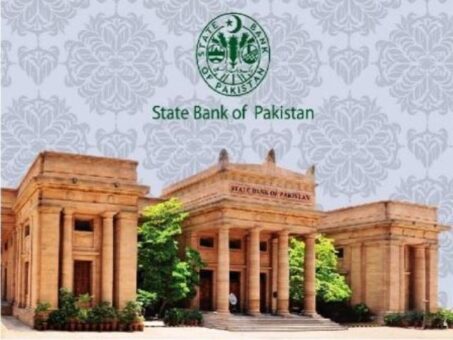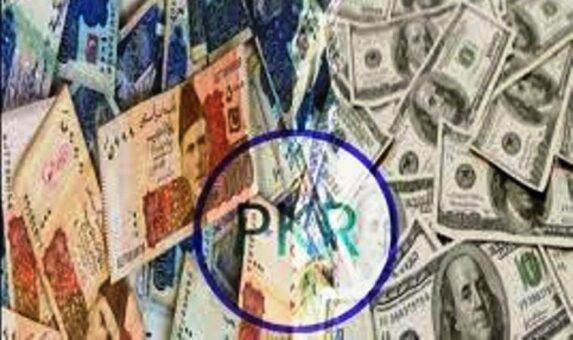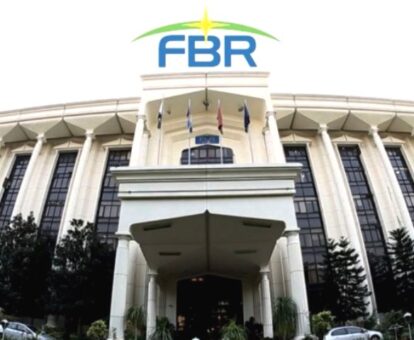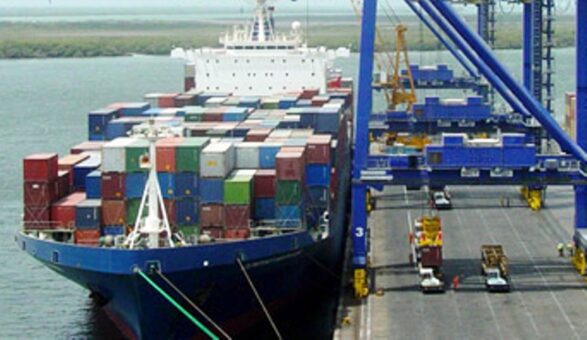KARACHI: The State Bank of Pakistan (SBP) on Monday raised the benchmark interest rate by 150 basis points to 13.75 per cent from 12.25 per cent following the announcement made by the Monetary Policy Committee (MPC).
The SBP said that in today’s meeting, the Monetary Policy Committee (MPC) decided to raise the policy rate by 150 basis points to 13.75 percent. This action, together with much needed fiscal consolidation, should help moderate demand to a more sustainable pace while keeping inflation expectations anchored and containing risks to external stability.
Since the last MPC meeting, provisional estimates suggest that growth in FY22 has been much stronger than expected. Meanwhile, external pressures remain elevated and the inflation outlook has deteriorated due to both home-grown and international factors.
READ MORE: SBP may increase key policy rate by 100bps: poll
Domestically, an expansionary fiscal stance this year, exacerbated by the recent energy subsidy package, has fueled demand and lingering policy uncertainty has compounded pressures on the exchange rate. Globally, inflation has intensified due to the Russia-Ukraine conflict and renewed supply disruptions caused by the new Covid wave in China. As a result, almost all central banks across the world are suddenly confronting multi-year high inflation and a challenging outlook.
After contracting by 0.9 percent in FY20 in the wake of Covid, the economy has rebounded much more strongly than anticipated, growing by 5.7 percent last year and accelerating to 5.97 percent this year, as per provisional estimates. At 13.4 percent (y/y), headline inflation unexpectedly rose to a two-year high in April and has now been in double digits for six consecutive months. Inflation momentum was also elevated, at 1.6 percent (m/m), and core inflation rose further to 10.9 and 9.1 percent in rural and urban areas, respectively. On the external front, notwithstanding some encouraging moderation in the current account deficit during April, the Rupee depreciated further due both to domestic uncertainty as well as recent strengthening of the US dollar in international markets following tightening by the Federal Reserve.
READ MORE: SBP may raise policy rate by 100bps to 13.25%
The MPC’s baseline outlook assumes continued engagement with the IMF, as well as reversal of fuel and electricity subsidies together with normalization of the petroleum development levy (PDL) and GST taxes on fuel during FY23. Under these assumptions, headline inflation is likely to increase temporarily and may remain elevated throughout the next fiscal year. Thereafter, it is expected to fall to the 5-7 percent target range by the end of FY24, driven by fiscal consolidation, moderating growth, normalization of global commodity prices, and beneficial base effects.
Considering the balance of risks around this baseline, the MPC felt it was important to take effective action to anchor inflation expectations and maintain external stability. In addition to today’s policy rate increase, the interest rates on EFS and LTFF loans are also being raised. Going forward, to strengthen monetary policy transmission, these rates will be linked to the policy rate and will adjust automatically, while continuing to remain below the policy rate in order to incentivize exports. At the same time, the MPC emphasized the urgency of strong and equitable fiscal consolidation to complement today’s monetary tightening actions. This would help alleviate pressures on inflation, market rates and the external account.
READ MORE: Policy rate may rise as T-Bill yields increase sharply
Unlike most emerging markets, Pakistan experienced a relatively mild contraction after the Covid shock in 2020, followed by a sustained and vigorous rebound. As a result, output is now above its pre-pandemic trend, such that tightening of macroeconomic policies that is necessitated by the presently elevated pressures on inflation and the current account is also warranted from the perspective of demand management.
Most demand indicators have remained strong since the last MPC—including sales of POL and automobiles, electricity generation, and sales tax on services—and growth in LSM accelerated in March. Both consumer and business confidence have also ticked up. With the output gap now positive, the economy would benefit from some cooling. On the back of monetary tightening and assumed fiscal consolidation, growth is expected to moderate to 3.5-4.5 percent in FY23.
READ MORE: State Bank enhances frequency of MP reviews to eight
The current account deficit continues to moderate. In April, it fell to $623 million, less than half the average for the current fiscal year, on the back of lower imports and record remittances. Based on PBS data, the trade deficit shrank by 24 percent relative to its peak last November. These developments are in line with SBP’s projected current account deficit of around 4 percent of GDP this year. Next year, the current account deficit is projected to narrow to around 3 percent of GDP as import growth continues to slow with moderating demand and the recent measures taken by the government to curtail non-essential imports, while exports and remittances remain resilient.
This narrowing of the current account deficit together with continued IMF support will ensure that Pakistan’s external financing needs during FY23 are more than fully met, with an almost equal share coming from rollovers by bilateral official creditors, new lending from multilateral creditors, and a combination of bond issuances, FDI and portfolio inflows. As a result, excessive pressure on the Rupee should attenuate and SBP’s FX reserves should resume their previous upward trajectory during the course of the next fiscal year.
Instead of the budgeted consolidation, the fiscal stance in FY22 is now expected to be expansionary. At 0.7 percent of GDP, the primary deficit during the first three quarters of the year compares unfavorably with the primary surplus of 0.8 percent of GDP during the same period last year. This slippage was driven by a sharp rise in non-interest expenditures, led by higher subsidies, grants and provincial development expenditures. The resulting demand pressures have coincided with the sharp rise in costs from the surge in global commodity prices, exacerbating inflationary pressures and the import bill.
Timely action is needed to restore fiscal prudence, while providing adequate and targeted social protection to the most vulnerable. Such prudence enabled Pakistan’s public debt to decline from 75 percent of GDP in FY19 to 71 percent in 2021 despite the Covid shock, in sharp contrast to the average increase of around 10 percent of GDP across emerging markets over the same period.
READ MORE: Key policy rate goes up to 9.75%; SBP raises 250bps in less than month
In nominal terms, private sector credit growth remained robust through April, reflecting strong economic activity and higher input prices which have enhanced working capital requirements of firms. Since the last MPC meeting, secondary market yields, benchmark rates and cut-off rates in the government’s auctions have risen, particularly at the short end. The MPC noted that the market rates should be aligned with the policy rate and in case of any misalignment after today’s policy decision, SBP would take appropriate action.
Headline inflation rose from 12.7 percent (y/y) in March to 13.4 percent in April, driven by perishable food items and core inflation. The rise in core inflation reflects strong domestic demand and second-round effects of supply shocks. At the same time, measures of long-term inflation expectations have also ticked up. As electricity and fuel subsidies are reversed, inflation is likely to rise temporarily and may remain elevated through FY23 before declining sharply during FY24. This baseline outlook is subject to risks from the path of global commodity prices and the domestic fiscal policy stance. The MPC will continue to carefully monitor developments affecting medium-term prospects for inflation, financial stability, and growth.



